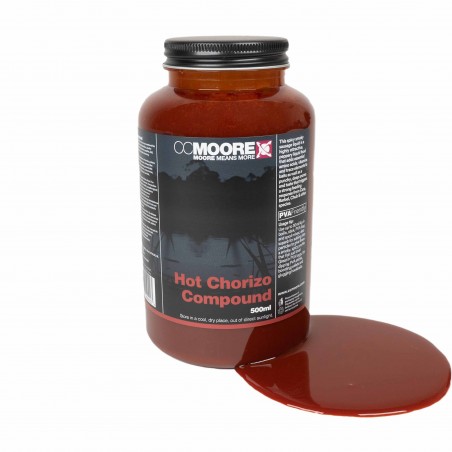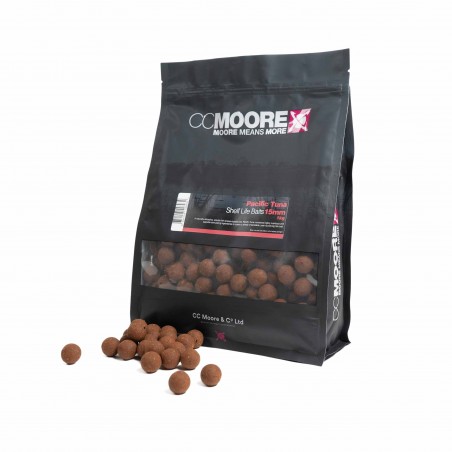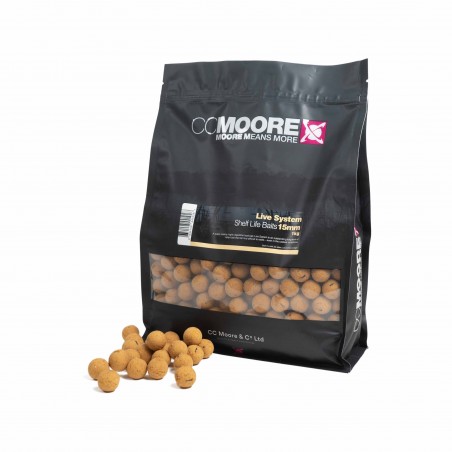Mark Pitchers – Pitcher Perfect Boilie Fishing
Boilies are probably the most widely used of all carp fishing baits; they are practical, convenient and are without doubt incredibly effective when it comes to catching carp from all types of waters from cloudy farm ponds to big, wild windswept gravel pits. For me, the out-and-out boilie tactic has featured heavily in my approach and has done for many years; often selecting the bigger fish from many of the venues that I have fished and being my ‘go- to’ method when setting out on a water for the very first time.
.jpg)
So, first and foremost, when would I choose to fish a no-nonsense, pure boilie approach? Well, first of all, I guess this depends on the venue in question. I would categorise the waters I am fishing into three groups; low- stocked, general stamp and highly stocked. The boilie approach would generally be used on those waters that are low- medium stocked, where you simply do not require masses of bait to hold fish in a swim, feeding and competing for long periods. Boilies will no doubt catch those carp from heavily stocked venues, but with so many fish present, they are not the most suitable for the given situation.
.jpg)
On many of the highly stocked waters, the particle approach works well with lots of small food items keeping the fish grubbing about for long periods, hemp, pellets and corn in particular. On those waters where the stock is much less, you simply do not need the same quantities or numbers of food items, as you may only be trying to encourage smaller groups of fish to feed and this is where boilies can be very effective.
Another scenario I would opt to use straight boilie is if there are nuisance species present, or you are simply trying to pick out the better stamp of carp in the lake. In both of these cases, I may also alter the sizes of boilies I am using, switching to bigger baits if I feel the ‘better’ sized fish are not getting a look in over the smaller ones. If there are a lot of bream, tench and small slivers in the lake, using a boilie only approach will help to eliminate any unwanted attention.
.jpg)
So that leads me on to what I look for in a boilie and what helps to determine my choice of bait, as this can certainly be a tricky decision for a lot of anglers out there with so much to choose from at their local tackle shop. Personally, a boilie has to serve a major purpose and that is to fulfil the carp’s requirements in terms of nutrition and other essential vitamins and proteins needed for sustained health and growth. I have always preferred a red fishmeal type bait, it is a mix I have used for years and I am so confident in using a high-quality fishmeal that it has now become an afterthought in my approach.
In general, I will use a ‘fishmeal’, a fish-based boilie throughout the warmer spring days through until the autumn when the leaves begin to drop. When the leaves drop and sediment begins to build up on the lakebed, this is when I will switch to a visual bait such as the Live System, to stand out against the dying wed and debris that scatters the lakebed.
.jpg)
For me, a good boilie has to be soft in its texture, allowing the fish to eat and digest it a great deal easier than a firmer, harder bait; the easier those fish eat and pass through the bait, the more they will want to eat it and this is where the boilie really does come into its own. Obviously, if there are a lot of nuisance species present, a softer bait can sometimes hinder you, but wherever possible, I will use it as soft as I can get away with. In terms of attraction, a bait with a soft texture and thin skin will no doubt release a great deal more attraction into the swim, working ‘from the off’.
.jpg)
I have never been one to use a boilie straight from the bag, my logic behind this is that I believe by enhancing those standard baits gives me an advantage over those other anglers on the lake who are using baits straight from the bag. Don’t get me wrong, a boilie straight from the bag will still be very effective and bursting with attraction, but, wherever in my angling I can gain those percentages, I will do so.
.jpg)
I have two ways in which I boost my boilies, while maintaining their soft texture and enhancing their overall ‘food value’ and attraction. For my summertime Pacific Tuna boilies, I coat them in a mixture of Hot Chorizo and Liquid Crab, allowing them to soak for a minimum of 24 hours. To this I then add a dusting of Krill Meal, this helps to form a crust around the baits, making them easier to stick out or catapult, while adding another attractive dimension.
.jpg)
The Live System baits I use in the colder months I soak in a mixture of bottles water, Amino 365 and carnation milk, a lovely creamy, fruity combo that softens the bait even more while ensure the baits are saturated with attraction and powerful food signals.
I often get a lot of questions regarding the choice between shelf life and freezer bait and no doubt, my own stance on this has changed in recent years. The quality of shelf life available these days has dramatically improved than say 10 years ago, with the refinement and discovery of new ingredients and natural preservatives. Years ago, I wouldn’t have touched a shelf- life bait, but now I find myself often using the quality shelf lifes from CCMoore, which certainly haven’t hindered my catch rate to any degree. The Pacific Tuna which I now use for 75% of my angling is incredibly soft and fresh as a shelf life, with its naturally preserved makeup due to the presence of salts from the liquids that go into making it.
.jpg)
Certainly on my trips abroad or when I have been away for a week at a time doing tutorials, shelf lifes have made my life a great deal easier and have no doubt bought success wherever I have taken them.
Most of my fishing in recent years has been done with minimal amounts of bait, often just a simple PVA stringer of three Pacific Tuna baits. By observing the water closely, looking for subtle signs of feeding and fizzing, you can quickly begin to pinpoint areas where the fish are moving and place minimal traps that can bring quick bites.
.jpg)
A three-bait stringer provides enough attraction around the hookbait to promote interest, while also maintaining the subtle factor that the carp cannot associate with angling pressure such as larger volumes of bait and large scatterings of boilies. To increase the pulling power of my stringers even more, I like to give them a good dip in the Hot Chorizo Extract, to really crank up the food signals!
.jpg)
Wherever possible, perfectly mimicking your free offerings will no doubt increase the carp’s confidence when approaching the hookbait itself. A hookbait positioned flush to the deck, matching the surrounding baits will cause very little caution to the carp when they are feeding. Especially during the later stages of the year when the fish have been heavily pressured on pop- ups or bright hookbaits, toning it down and completely matching the loosefeed baits you are using will provoke a positive feeding response.
In all situations, if I can, I would choose to fish a bait on the deck, but there are some scenarios when you simply cannot risk the hookpoint of the rig becoming masked by debris. When there is weed and other types of leaf litter present, I will fish my low- lying hinge stiff rig, coupled with a match the hatch corkball pop- up. These two rigs form my whole armoury of rigs and by altering the length of the boom section and rigs, will suit the majority of lake beds that I fish over.
.jpg)
The ways in which boilies can be introduced depends largely on the range and the spot itself, in general, I will use the catapult up to around 60 yards and after a little practice, this can be by far the most accurate way of introducing boilies. If I want to spread the baits a little more over an area, the throwing stick will be my choice and for getting baits at long range or tight onto a small spot, the impact spod would be up to the job.
Although many of us use boilies as they come, in their round form, there is no questioning that experimenting with different shapes and sizes can be advantageous. During the colder months of the year, I often prefer very fine boilie crumb, as this provides maximum levels of attraction without the risk of overfeeding. Halves and chops are also very good and perfecting when baiting by hand at close range or introducing close to feeding fish, without the risk of making disturbance and potentially spooking them off.
.jpg)
This brief outline is my preferred way of using boilies and how I have found them to be the most effective and successful, alongside the tactics and rigs I employ when fishing the no nonsense boilie approach. If you are an angler who relies heavily on boilies year- round, tweaking your approach and maximising your baits attractiveness will certainly bring you more rewards and a distinctive edge over other anglers on your lake.
.jpg)



